It’s the start of April in Ireland and spring is really springing. Lots of colour is appearing in the garden. Rosemary should be in full bloom now and attracting bumblebees. Also out are the beautiful blue forget-me-nots, loved by bees and other insects. You’ll also see fritillaria, gelder rose, hyacinths, grape hyacinths, iris, and lavender; the list goes on and on. Of the larger shrubs, the likes of yellow forsythia and some magnolias are on the way out but lilacs, rhododendrons, and camellias are showing well. You might see beautiful Asian flowering cherries beginning to bloom or some of our own native wild cherries. Pollinator-friendly wildflowers we see at this time of year include primrose, heather, dandelion, and spurge. As well as the rosemary and cherries, you may have pollinator favourites such as borage and crab apple in bloom.
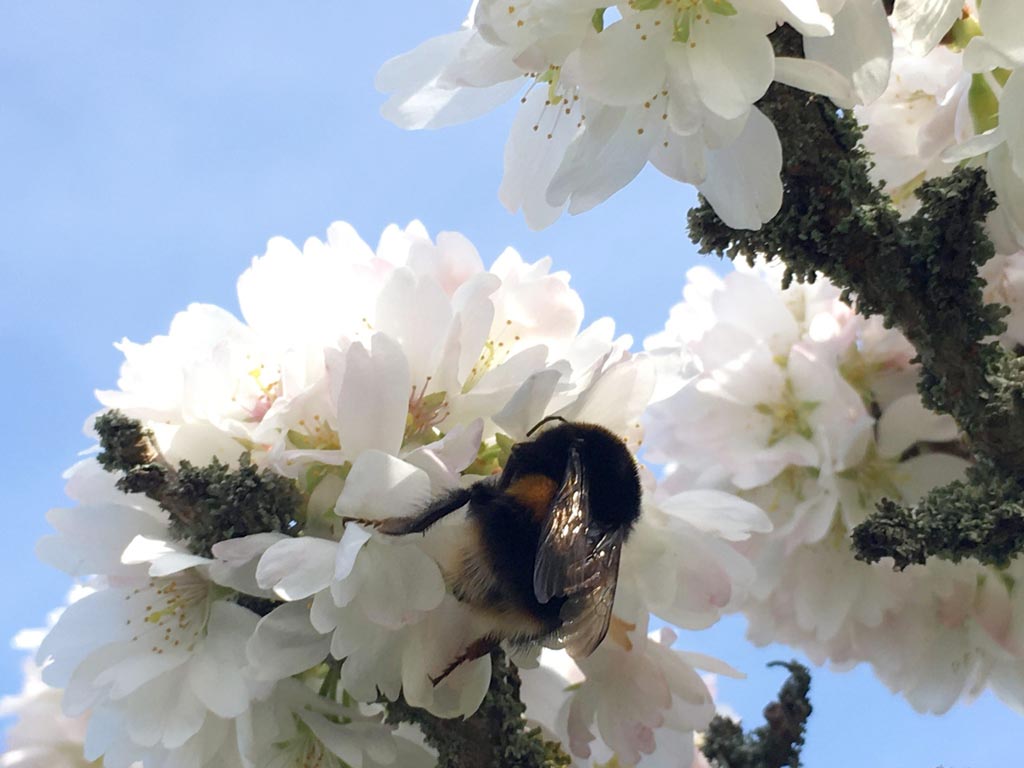
Prunus ‘Woodfield Cluster’ cherry tree with bumblebee
Daffodils will be on the way out towards the end of April but tulips are filling the void (don’t forget to dead-head your daffs). Woodlands look particularly beautiful now with swathes of bluebells and the like and are very photogenic. Some ‘precocious’ plants like primrose, cowslip, and wood anemone try to appear before the trees are in leaf to maximise available light but if they’re out too early, there might not be any insects around to pollinate them. You might even catch a whiff of our native Irish garlic, ramsons. The poisonous lords & ladies with its beautiful red berries is beginning to flourish. It’s also known as cuckoo’s pint as it arrives in sync with the cuckoo.
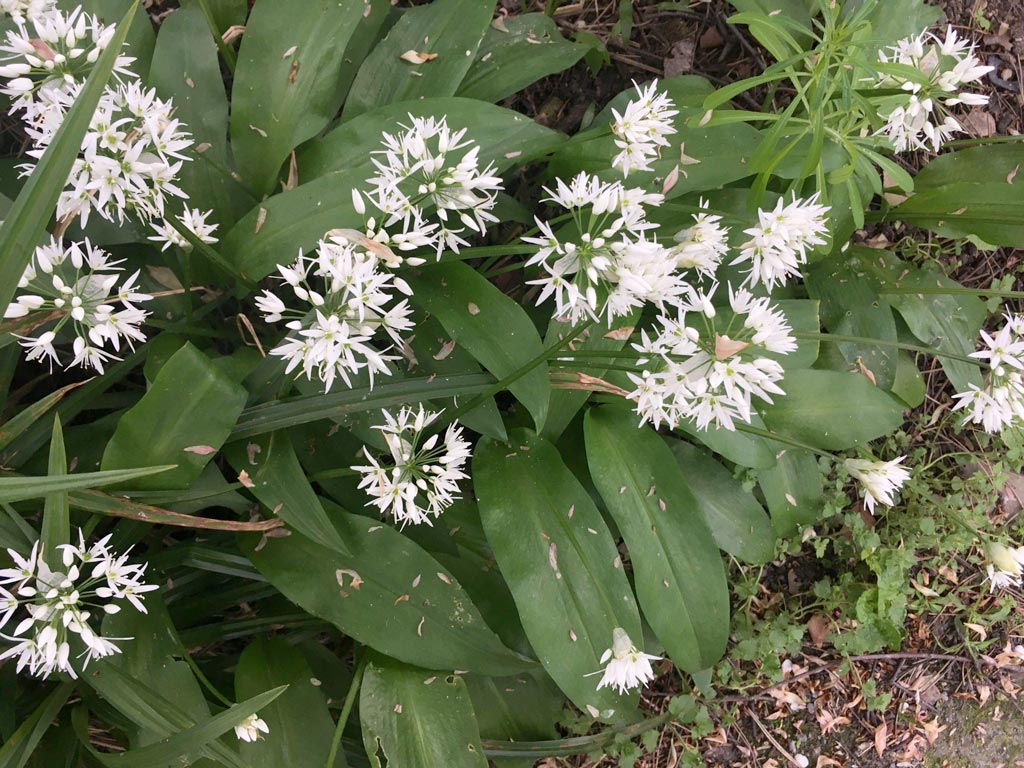
Some birds are only claiming territories now while others are already raising young. Keep an eye on the birds in your garden and see if any are carrying nesting material to make nests or caterpillars to feed young. Nature is a great coordinator. When the leaves appear on the trees they provide cover for birds and their nests. They also give insects like butterflies and shield bugs a place to lay their eggs. Keep an eye out for peacock, small tortoiseshell and orange tip butterflies. Birds like blue tits and great tits time the hatching of their young with the appearance of caterpillars. Other birds like sparrowhawks nest a little later so that their young have a supply of young songbird nestlings to feed on.
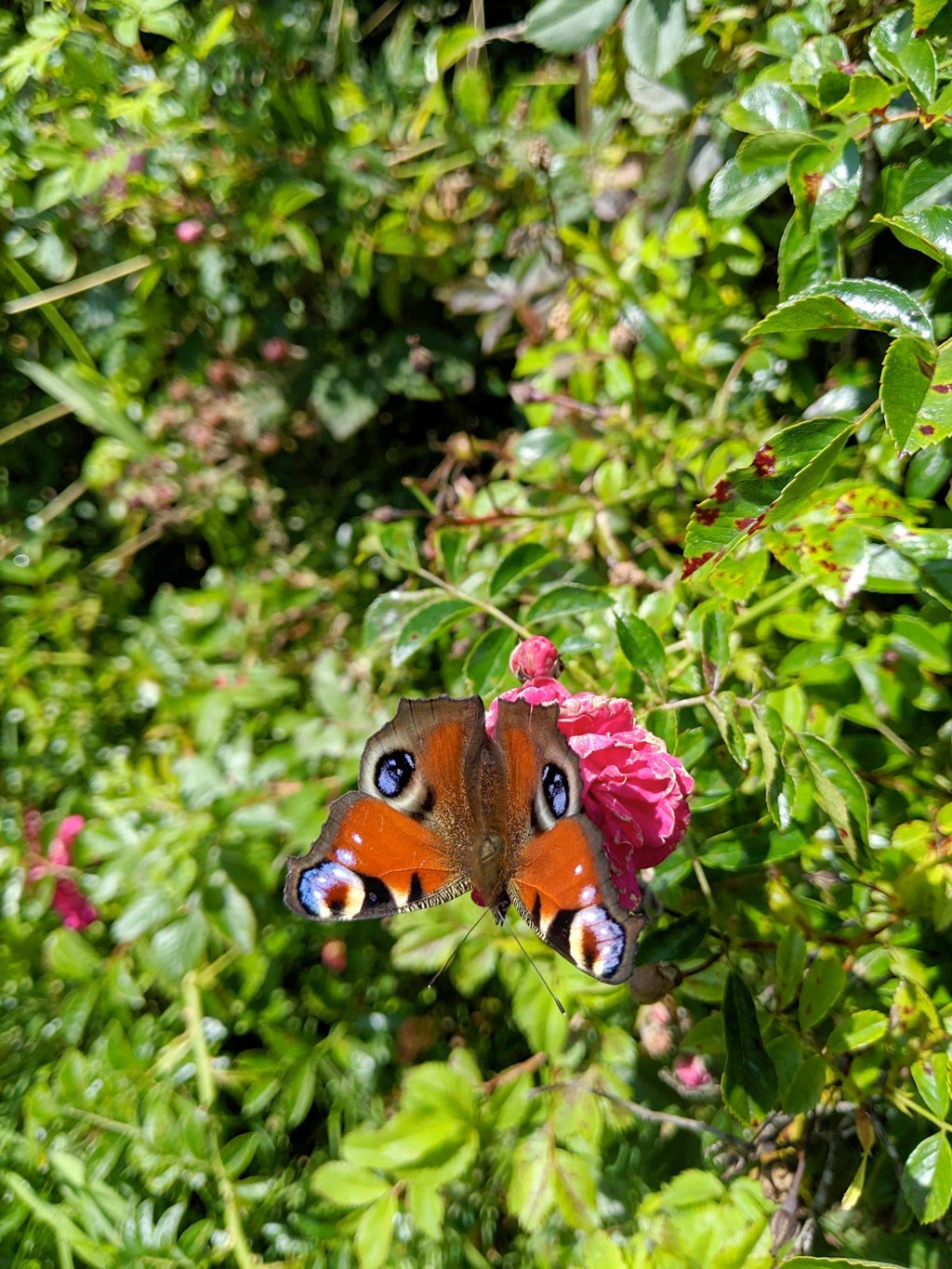
Aglais io (peacock butterfly)
Lots of migrant birds are flying in to Ireland, mostly coming from Africa. Swallows and house martins are already here and soon we’ll see swifts. Some warblers like chiffchaffs, willow warblers and blackcaps have already set up territories.
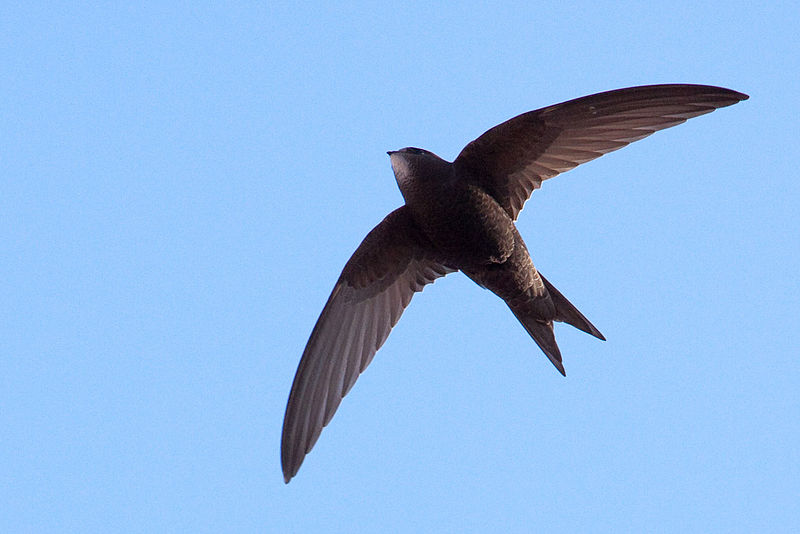
Apus apus (swift)
Now that we are well into spring we can see the first of the butterflies. Butterflies seen outside from November to February have probably been disturbed during their hibernation. Now is prime peacock butterfly time. Peacock butterflies become active on the first warm sunny day of spring, sometimes as early as late March and flying until early May or later. Females lay up to 500 eggs after mating, usually in the sunny areas covered with nettles, which are primary food for the caterpillars. So spare a thought for the butterflies and blue tits before you clear your nettle patch.
Honey bees and other bees have been appearing for a while now after their winter ‘hibernation’. Bumblebees are larger than honey bees and generate more heat. This allows them to work during cooler weather. So you will see them out and about from early spring. They are all preparing for the mass arrival of blossom bringing nectar and pollen. Unfortunately, climate change has begun to disrupt this natural synchronisation.
The emergence of insects is bringing the first bats out of hibernation. You might be lucky enough to see some around dusk, particularly if you’re near water. Pipistrelles and Leisler’s bats should be evident. Bats can eat up to 3000 midges each night. In and around 25th April, the black St. Marks’ Fly makes an appearance, often in huge numbers.
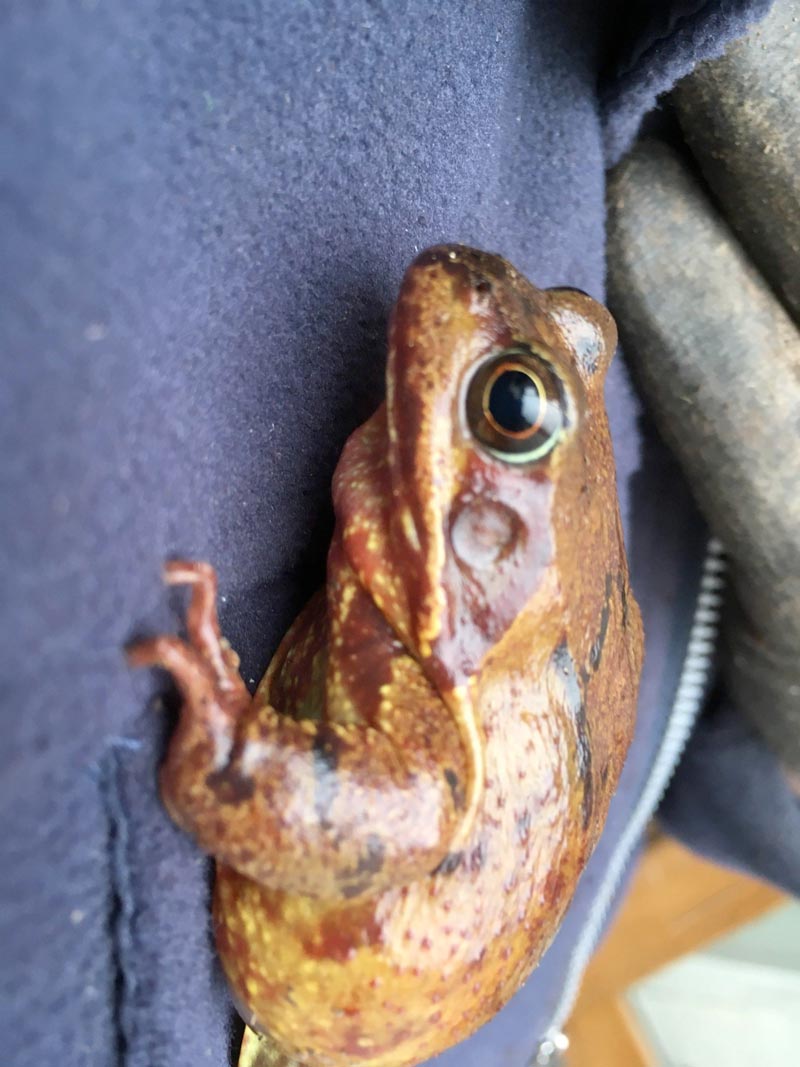
Rana temporaria (common frog) hops onto a member of staff
Frogs will have laid spawn earlier in the year and tadpoles should be emerging now. Fox cubs have been appearing since March so keep an eye out. Squirrels are nesting too! If you live in the west of Ireland, you might be still lucky enough to see red squirrels building drays.
What you can do:
- Record when the plants in your garden come into leaf and flower and compare next year.
- Without disturbing them, see if any birds have built their nests in your garden and record the date if you can.
- It might be a bit late to build a bird box but you could build a bat box to gives bats somewhere to roost.
- Continue to feed birds in the garden as they need extra for the new little mouths.
- Consider planting wildlife-friendly plants. You will reap the benefit next year.
Text by Glynn Anderson, Head Guide at National Botanic Gardens of Ireland, Glasnevin
